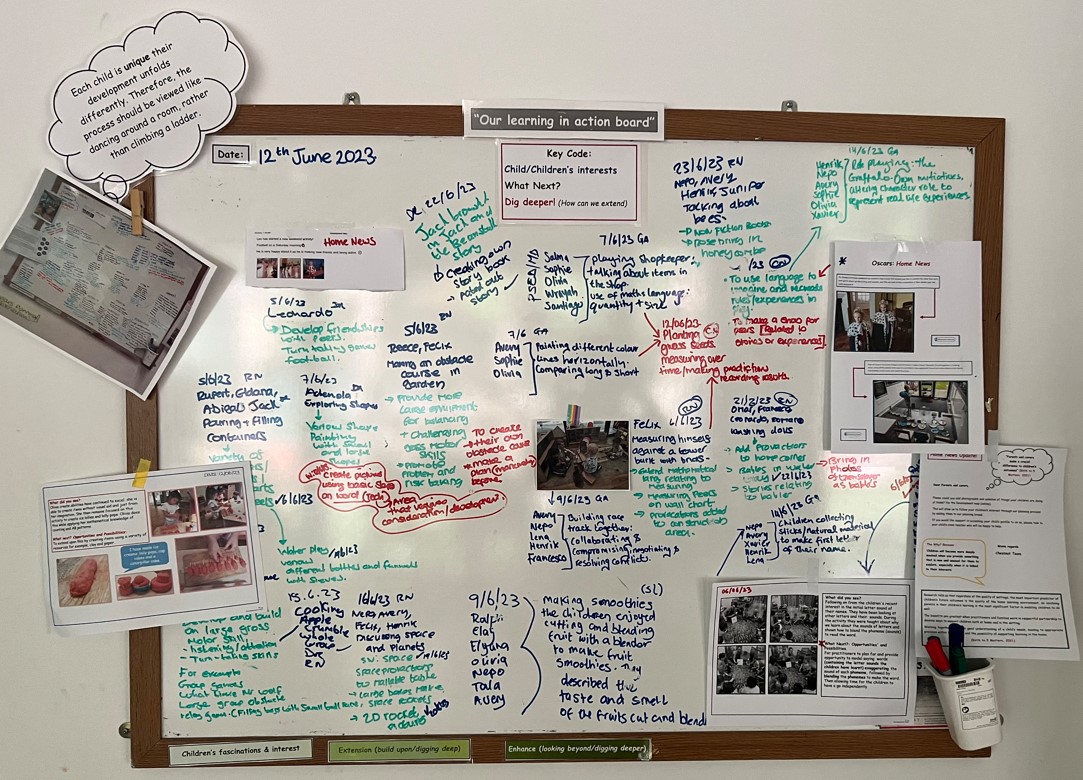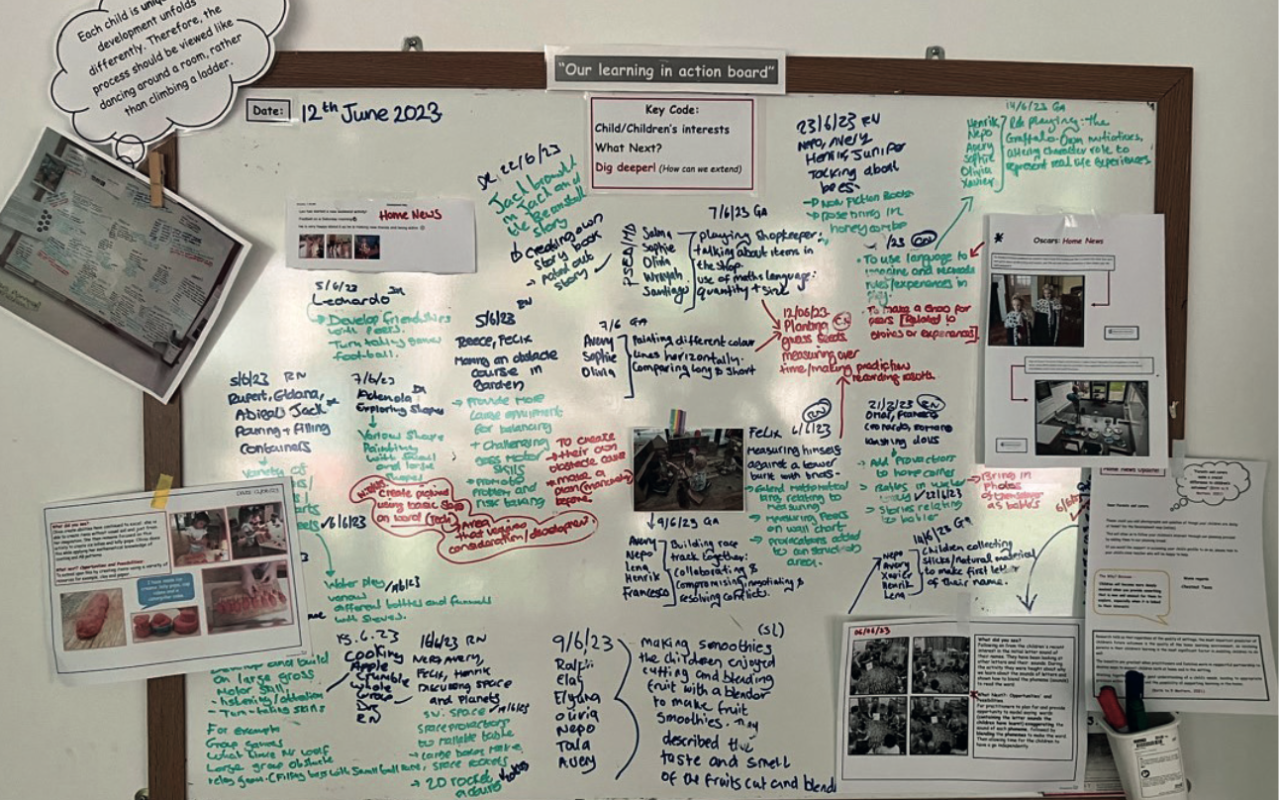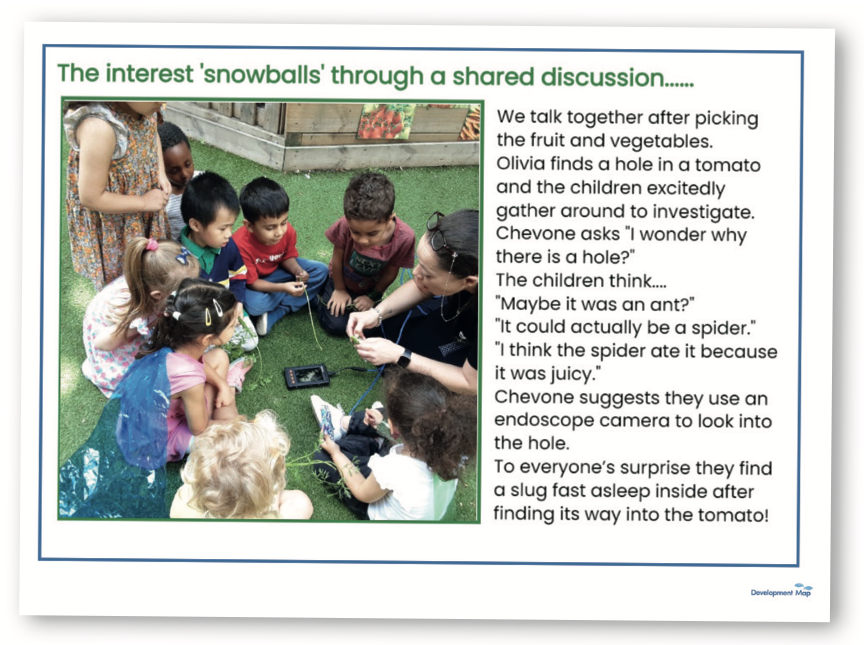
Whiteboards at one setting in northwest London have become a collaborative focal point for planning activities and documenting children’s thoughts and practitioners’ responses in a visible way, explain Chevone Newman and Di Chilvers.
Our children at South Acton Nursery School and Children's Centre in northwest London are brimming with ideas, interests and fascinations. Their child-led play and interests inform our curriculum in inspiring, creative and meaningful ways, as Ofsted saw in its recent visit, reporting that adults ‘are responsive to children’s interests. They use these as a springboard to create activities that hook children in and instil in them a sense of wonder. Careful curriculum thinking together with close attention to each child’s needs and interests, ensure that they develop deep knowledge, skills ... and understanding’ (Ofsted report, May 2023).
It is commendable that Ofsted has acknowledged the value and impact of following children’s interests and how they inform our curriculum through co-constructive, collaborative partnerships which also include parents. Interests are the connection between home and setting as children bring their ‘funds of knowledge-based interests’ which we see and hear in their child-led play.
As a team we developed an approach which recognises, follows, supports and extends interests through using whiteboards to document everyday observations and look for the themes and patterns in their play. The whiteboards support observation- in-action, assessment-in-action and planning-in-action (see Birth to 5 Matters, 2021) and tell the story of children’s individual and collaborative interests.

We began using whiteboards as a quick way of documenting children’s interests from our observations and conversations with them. It is hard to remember everything when you are in the thick of play, so the large whiteboards (indoors and outdoors) became our observation-in-action hubs of interests, jotting down brief notes of what we saw (key words), who was involved, recording any talk, children’s questions, our questions and thoughts and ideas for what might happen next.
The notes that have been added are discussed together, usually at the end of the session/day, and the children’s play, interests and learning become clear; we see the themes, connections and relationships. Who is leading the play? What interests are the children following? Who is involved? How can we support and add to their interests?
The whiteboards act as visual focal point for professional discussions about children’s interests as we notice these patterns and links in their play. For example, Xavier’s favourite story Handa’s Surprise tuned into his love of fruit; he brought a special bag of fruit from home for his birthday which he shared with all the children. He also told us about his grandfather’s apple orchard in Portugal! Observations and whiteboard notes over the next week showed his deeper fascination with the taste and textures of fruit and where they came from. We saw from the whiteboard notes that the interest was snowballing across the nursery as more children became involved in moving the play from individual interest to a collaborative interest.
Extending and deepening the interest involved ‘responsive adults tuning into their play, interactions and thinking’ and then ‘listening, guiding, explaining and asking appropriate questions’ (Birth to 5 Matters) to help the children understand more complex concepts; this is all about learning together, sharing and building understanding through creating and thinking critically, what Helen Hedges (2022) refers to as cognitive enquiry.
For example, Xavier and his friends wanted to see what happened when the fruit was combined in the blender, and the scientific experiments began with plenty of discussion about taste, smell and texture.
Our professional discussions arising from this cognitive enquiry helped us to make informed shared assessments about children’s development and learning and what we needed to do next to support them – what Ofsted described as ‘careful curriculum thinking’.
Over time, reflecting on the use of the whiteboards, we have tweaked and refined our practice. However, after a training day with Di Chilvers we began to look at Hedges’ research on children’s interests, enquiries and identities, where she calls for deeper, rather than superficial, interpretations of children’s interests. She describes children’s interests as ‘working theories’, which are defined as ‘the evolving ideas and understandings that children develop as they use their existing knowledge to try and make sense of new experiences’ (Hedges, 2022).
In our whiteboard journey we wanted to ensure that children’s interests (working theories) were developing learning beyond superficial responses (for example, giving children even more cars if they have shown an interest) rather than being more analytical and looking deeper into the interest, which may turn out to be an interest in wheels turning (could it be a rotation schema?) or an interest in number plates and badging.
Hedges explains this as going beyond children’s ‘activity-based interests’ which can become superficial and repetitive and looking for ‘continuing interests’ which evolve over a period of time and involve children in deeper, more ‘conceptual’ learning, with the adults responding in reflexive ways to their exploration and investigations.
We liked her idea of ‘interests-in- motion’, where interests are ‘developed over time and in multiple directions through both organised and chance encounters with ‘critical moments, materials and collaborators’ (Hedges, 2022).
This is when we created our learning-in-action board as we:
We decided to use a colour code for this on the whiteboard – Interest (blue), What next (Green), Dig deeper (Red) – so we could see at a glance how children’s learning was being extended as well as the progression of learning over a period of time. The whiteboards help us to continuously reflect on the effectiveness of our observations and assessments and how we implement personalised, progressive planning for our children.
When a whiteboard is full, we photograph everything and save this in a floor book or file, so we see the progression of interests over time and importantly reflect on previous documentation.
This is a great opportunity to talk with and involve the children in thinking about their past, present and future ideas and learning. Reflections like this add to the deepening of their understanding, encourage critical thinking, and help them make connections within their learning – a process called meta-cognition. It also acts as a building block for practitioners to extend their own understanding of children’s development including how interests (working theories) can lead to sustained shared thinking.

Using whiteboards for planning-in- action acts as a central hub for observation, assessment and curriculum planning; taking a holistic approach and weaving together many aspects of children’s lives and learning. For example, the whiteboard may include:
The whiteboard becomes the focal point of planning, documenting the children’s voices and the adults’ responses, making development and learning visible. Everyone is involved; children can see how their interests and ‘funds of knowledge’ are recognised and valued, parents and families have started to read the board and add contributions from home, and Ofsted has recognised what it called a ‘hybrid approach’ to the curriculum.
Our hybrid approach has evolved over time as we have experimented with different methods – the best place to begin is to get the biggest whiteboard you can and start jotting!
Early Years Coalition (2021) Birth to 5 Matters, https://bit. ly/46rp1Kq
Hedges H (2022) Children’s Interests, Inquiries and Identities. Curriculum, Pedagogy, Learning and Outcomes in the Early Years. Routledge
‘101 Ways and reasons for using a white board’: https://bit. ly/46pB3nI
South Acton Nursery School and Children’s Centre workshop ‘Following children’s interests using whiteboards’ on 21 March 2024 (4-6pm). Email admin@southactoncc.com for more information.